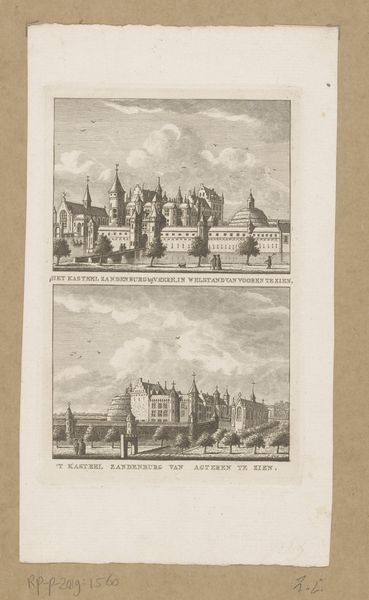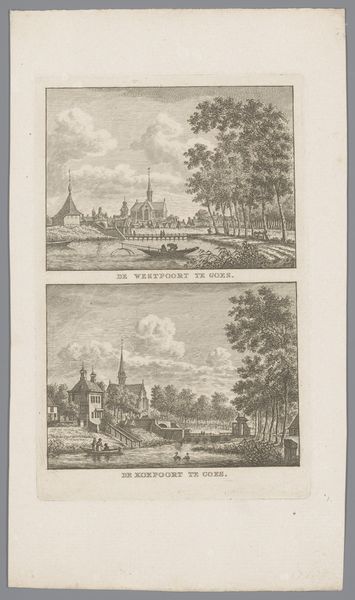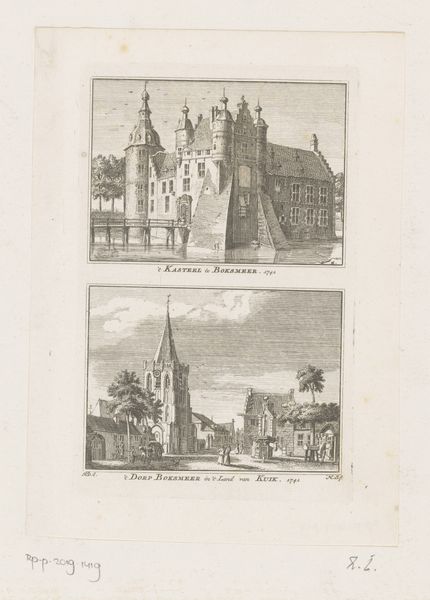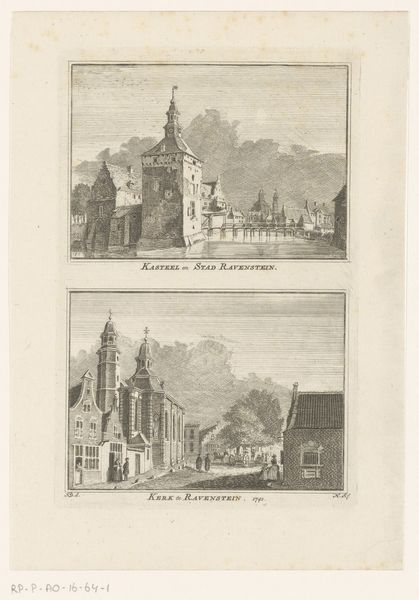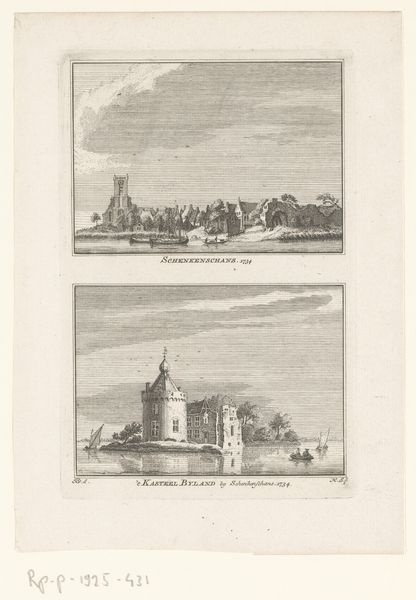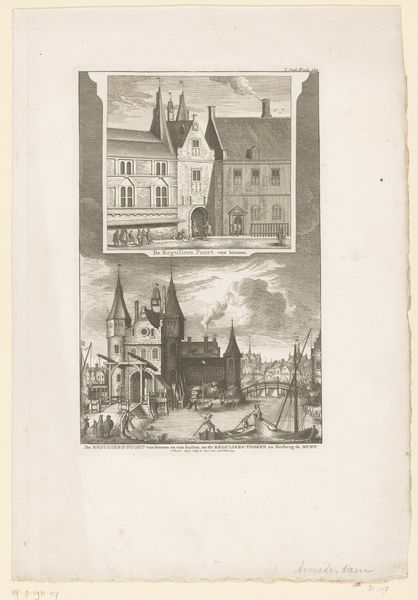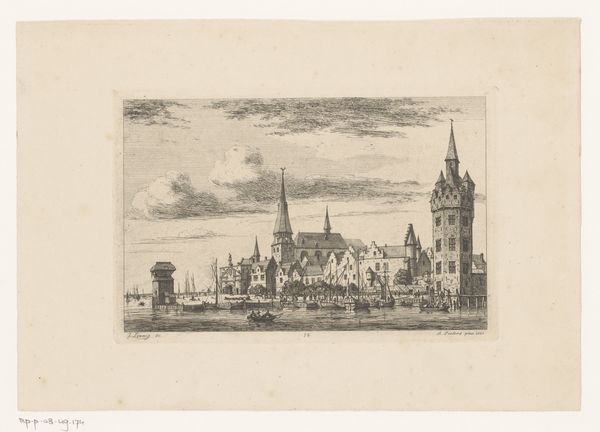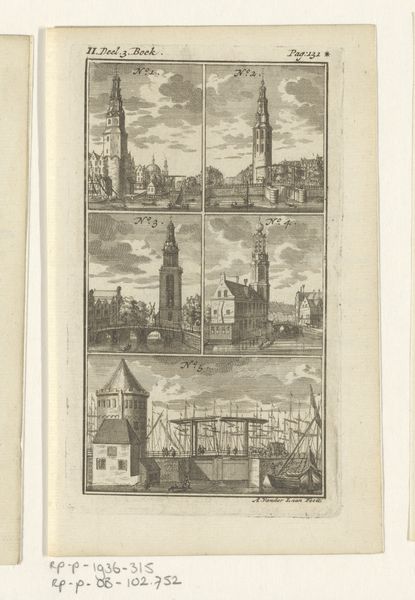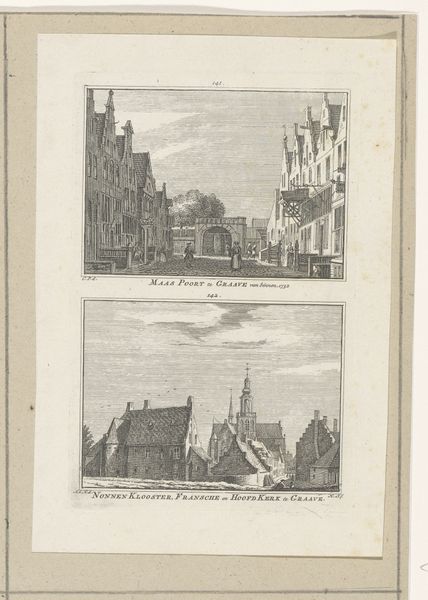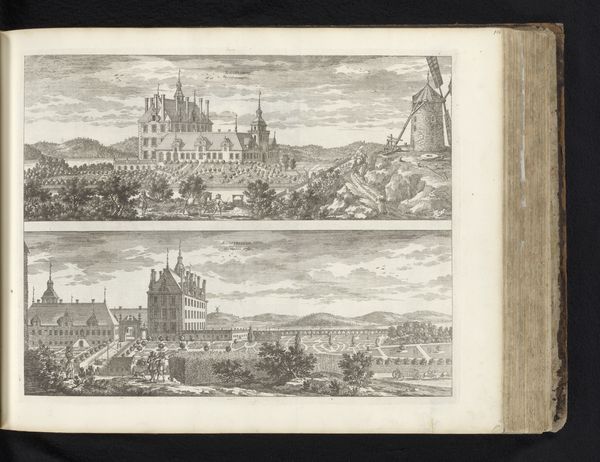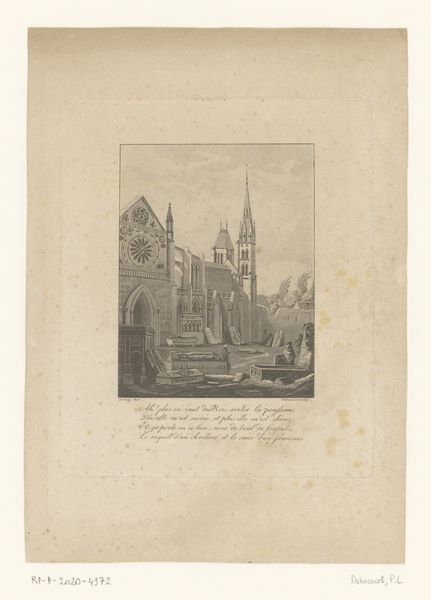
Gezichten op de Havenpoort en de Franekerpoort te Harlingen 1786 - 1792
0:00
0:00
carelfrederikibendorp
Rijksmuseum
drawing, print, paper, engraving
#
drawing
#
neoclassicism
# print
#
paper
#
15_18th-century
#
cityscape
#
engraving
Dimensions: height 173 mm, width 110 mm
Copyright: Rijks Museum: Open Domain
Editor: This print by Carel Frederik Bendorp, titled "Gezichten op de Havenpoort en de Franekerpoort te Harlingen," made sometime between 1786 and 1792, shows two city gates. It's pretty detailed and seems to capture a sense of everyday life in the city. What can you tell me about the historical context of this image? Curator: Well, this print offers a glimpse into urban identity in the late 18th century. Consider what it *doesn't* show. Where are the factories or industrial aspects we see in later urban landscapes? This depicts Harlingen at a specific moment. The detailed rendering of the gates themselves is also significant. How might these images of civic infrastructure function politically or socially? Editor: I guess by depicting these impressive structures, the artist might be trying to project a sense of civic pride and order. Like, "look at how grand our city is!" Curator: Exactly. These gates aren't just physical barriers, they are symbols of power and control. They define who is in and who is out, both literally and figuratively. Moreover, prints like these were often circulated widely. They played a role in constructing and disseminating particular images of cities and the social order they represent. Did every citizen see their city this way? Probably not. Editor: So, this print is a curated image of Harlingen intended for a specific audience, rather than a neutral depiction of the city? Curator: Precisely. Think about how this imagery would be consumed, what values it promotes, and whose interests it serves. Visual culture always operates within complex networks of power. Editor: That's fascinating. I never thought about cityscapes having such political undertones. It really makes you question whose perspective is being represented. Curator: It certainly does. Considering the political and social forces that shaped art enriches our understanding and really encourages us to look deeper.
Comments
No comments
Be the first to comment and join the conversation on the ultimate creative platform.

